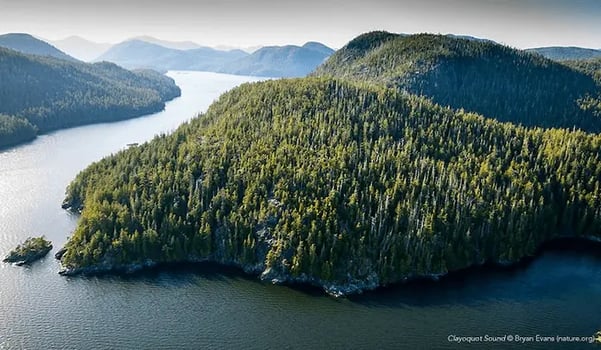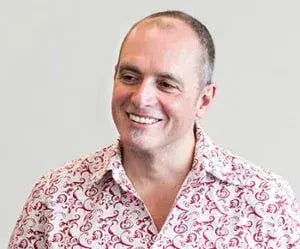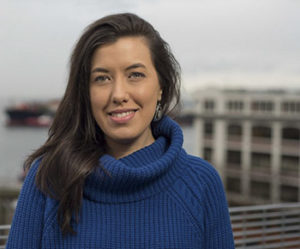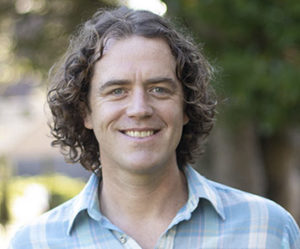Collaborating for a sustainable ecosystem in the planet’s largest coastal rainforest
Colleen Casimira
June, 2021

Category
Topics
Since 2017, Reos Partners has been working with The Nature Conservancy to advance the strategic goals of the Emerald Edge, increasing leadership and environmental stewardship capacity and the development of diversified and sustainable economies for Indigenous and local communities. Learn how their work has begun to develop a robust network across the region, empowered to thrive by caring for the land, now and for future generations.
The Emerald Edge is one of the most remarkable ecosystems in the world. Spanning 100-million acres in the Pacific Northwest—from Washington through British Columbia and into Alaska—Emerald Edge is the largest intact coastal rainforest on Earth. Recognized as a “global treasure of biodiversity,” the area is home to a vast array of iconic wildlife and Indigenous communities that have resided here for millions of years.
Throughout its history, the region has been subject to a number of threats that have put the environment and its people at risk. The Nature Conservancy (TNC) is committed to working with the local communities across the Emerald Edge to establish a sustainable future for the land and the people who call it home. Reos Partners Senior Consultant Ian Prinsloo explains, “The Emerald Edge project is dedicated to ensuring that local and Indigenous communities have voice and leadership in that work, that they are finding ways in which the communities thrive, and the ecology thrives.”
TNC turned to Reos Partners to bring their collaborative, systemic, and experimental approach to moving forward on the most pressing and complex societal issues. For the past four years, Reos has been partnering with TNC to bring local communities in the Emerald Edge together, identifying ways they can work collaboratively and learn from each other to improve economic gains and protect the ecological and cultural assets that make this area of the world so important.
In this Q&A, Prinsloo and two influential community and project leaders discuss the Emerald Edge program and the progress made in restoring the land and guiding local communities to sustainable economic growth.

Ian Prinsloo is a Senior Consultant at Reos Partners. He is a facilitator whose work develops the relational quality of groups as a platform for innovative solutions to challenges. He helps build leaders' capacity to initiate collaborative processes that reframe change as an act of creation.

Crystal Nelson is a Community Development Specialist with the Alaska Chapter of TNC and has been a critical driver of the impactful work in southeast Alaska. Crystal is Tlingit, a Raven-Coho from the Humpback Whale House in Dry Bay. As a community member, she is active in many initiatives as part of TNC and individually.

Jacob Perritt-Cravey is a leader of the CoastWorks Alliance Innovation Network, a growing partnership of local community leaders and businesses based in coastal Washington, dedicated to launching long-term economic development projects and transforming local natural resource systems to secure economic development and, ultimately, resiliency for coastal communities.
Q: What makes the Emerald Edge such an important region of the world?
Ian: It's an incredibly important ecological and cultural area. In the past, there was regular contact and connection across the communities and regions of this vast area. These communities used to be deeply linked, but that's all been broken. The re-establishment of those cultural links and community ties is incredibly important, as is the ecological importance of this band of geography.
Jacob: When you have a diverse bioregion like this, with a wide array of cultures, tribes, and natural resources, it's a big challenge to figure out how to utilize the natural resources in a way that creates economic vitality and also cares for the land. It’s a challenge but also an opportunity to learn from one another and cross-pollinate ideas across the region. There aren’t a lot of other places you could really compare it to.
Q: What is your role within the Emerald Edge project, and how did you get involved?
Crystal: I've been at TNC for two and a half years as a Community Development Specialist in the Southeast Alaska office and have a background in community and economic development. There are folks like me who have similar roles in each of the regions across the Emerald Edge. We consider a role like mine to be on the ground, working the closest with community partners. We aim to increase stewardship and leadership capacity, sustainable economic development opportunities, and the increase in sovereignty and authority for Indigenous and local communities across the Emerald Edge. Evidence shows if we work toward these outcomes with the Indigenous and local communities, we get better conservation outcomes.
Jacob: CoastWorks Alliance Innovation Network strives to generate economic opportunities along the Washington coast, bringing people together with a focus on how to create systems change. Our greatest strength is the network of people, bringing them together to solve existing challenges. We source these challenges from the community, and then we use our collective brainpower and connections to create new systems that support the economic vitality of the region.
Q: Why was Reos Partners brought on to the Emerald Edge project?
Crystal: I like to think of Reos as a system change expert. We hired Reos to help us implement social innovation methodology across the Emerald Edge. Of the multiple goals we had, one of them was to increase the capacity, both internally at TNC and externally with our closest partners, to facilitate systems change. Staff and partners in each of the three regions got training from Reos to lead systems change-facilitation. We picked up the tools that we were given early, and we used them consistently. We saw an incredible increase in our capacity to facilitate systems change.
Another part of the initiative with Reos was to enhance network weaving across the region. Through our work with Reos, we started to do what we call cross-regional network weaving to convene partners from the three regions. Network weaving is a huge part of the change in systems because it invites innovation.
Ian: The Emerald Edge project is dedicated to ensuring that local and Indigenous communities have a voice and leadership in that work and that they are finding ways in which the communities and the ecology thrive. Reos Partners was brought on to introduce our social lab methodology and our collaborative, systemic, and experimental approach to support that initiative. Though the Nature Conservancy could see why this way of working was important, they didn't have much practice or history in doing that work.
We worked with them to develop, through dialogue interviews, a clear assessment of the challenges that communities and people are facing within the Emerald Edge and across this very dispersed landscape. From there, some of our first work was about bringing forward a way in which people can work together, both locally and cross-regionally, in order to achieve some of these goals.
.webp?width=875&height=547&name=OlympicRainforestClaneGessel-1%20(1).webp)
Q: What does this collaborative approach mean for the project in the long term?
Ian: Reos Partners’ core competency is working in multi-stakeholder situations. So rather than optimizing for one part, we’re looking across the entire system to understand who is involved and who needs to be part of creating a new solution to the challenges they’re facing.
From the beginning, we’ve aimed to do this not in a way of coming in to take over but to build capacity and understanding for the way in which we work, so that it can be owned wholly by the organization and the communities—the TNC organizations, local facilitators, and community members—so that they can take a more leading role in the work as time goes on.
TNC is a great partner because of its commitment to being in this region for decades. We're there to support them in developing a strategy based upon Reos’ core competencies and to develop the capacity to live into that work as they go forward.
Q: How has Reos Partners helped with moving these initiatives forward?
Jacob: The impact has been cumulative. On one side, there’s learning facilitation and learning how to keep people focused, keep the process moving, and make sure that the scope is not too big or too small. Then there is also setting up the project for success before you even get in, tools that help get people thinking this way or breaking them apart to bring the ideas back together. It's an ongoing process where you crack it open, and you start to put it back together, and then you kind of break it apart, and you constantly refine where you’re trying to get to. There are so many phases to it all. You're helping other people think differently or expanding the way that they're looking at the resources or the role that they can play.
Crystal: Reos gives you a complete methodology to understand and change the system in your practice, and they teach you how to implement programming that increases the capacity of the community itself to do the work. It's not just this top-down Western dominant cultural approach. It enables us to work closely with the community as equal partners in ways that benefit them so they can do their work beyond our program. You're building the capacities so that they can continue to succeed and do these things.
We don't have to control everything that they do or have a hand in everything they do. I think that's really important for systems change because you need a whole network of people with the capacity to do big things. The social innovation lab methodology that we have been learning and practicing with Reos helps us to increase the social capital in our communities while also giving us the tools and a framework to understand how to do the systems change work.
One of the things that has been really important in this process is the direct support from Reos. They were available not only to me as a TNC employee but also highly available to our community partners. They would help us plan our meetings, have us learn and analyze what was happening, and teach us how to implement the system change facilitation. We got a lot of intensive support not only to learn the tools but also to go into the community and use them.
Ian: We’ve introduced a co-creative approach to make progress on these challenges. From the beginning, you're inviting in the current people who are facing the challenge. You are always in service to both their experience and knowledge while introducing practices, techniques, and experience that have been developed in other work. So it's an idea of always blending. How do we blend our experience and understanding with grounded, lived experience and knowledge of the place? How do we understand the way things need to work in this context?
We always say that we don't have the answer, but we have a process for engaging with people to discover possible solutions. It facilitates conversation through dialogue interviews. It brings people together to do hands-on work in terms of the accelerators we've done with them. It supports the ongoing innovation hubs.
Q: Can you elaborate on the innovation hubs Reos has facilitated?
Ian: We’ve supported ongoing innovation hubs in Southeast Alaska, Washington State, and British Columbia and helped them convene cross-regional meetings that bring together people from all three regions.
One of the things we find important at Reos is being able to nurture a portfolio of initiatives to address challenges. That means that, rather than saying, here's your challenge, we've now come up with the one best idea, and we're going to just pour all the effort into this, we instead identify what the challenge is and then nurture as many possible solutions as is feasible to work to address that challenge. This way, as we work toward solutions, everyone will have part of an answer. It's the act of having people move forward in their own direction and share what is being learned as they go so that knowledge is shared across the network.
We’ve supported the creation of innovation hubs for the work being done in Washington with the goal of driving economic autonomy and agency within the Washington region. The focus is on helping the local communities thrive economically while also benefiting the local environment. One of our strategies at Reos is to consider how to build locally based networks of innovation and then create a network of those networks to share information across the region.
Q: Can you elaborate on the accelerators? What are these, and how do they support the project?
Ian: The accelerators focus time and energy on projects that could achieve significant gains on challenges if those involved had more support. One major success coming out of the last accelerator focused on the creation of an endowment based in Southeast Alaska to support the work that's being done to achieve economic resiliency and stewardship of the land. The accelerator brought together people who’d had that idea for a while, and it was able to really focus that energy to get them in contact with resource people who had done similar work. This allowed for a focused conversation and facilitated exploration of these ideas. They’re now in a place a year and a half onwards where they've got the first bunch of funding and are now looking to ramp up by a huge degree to support that work. The accelerators are about taking the beginnings of ideas or stuck ideas and focusing on them to accelerate their progress.
Crystal: At the accelerator, we brought together partners with a history of intense conflict in this region. For the last 40 or 50 years, the timber conflict in Southeast Alaska has pitted jobs versus the environment and divided Indigenous communities. Regardless of the fact that we have this resilient network, we still have some residual tensions. Reos helped us make those tensions explicit so we could lean into them. We saw amazing progress. We truly were accelerated. As a result, one of our community partners, an Indigenous corporation, put the first $10 million for this endowment on the table.
Another outcome is that some of our community partners that were part of this working group got together and created a presentation they gave to the U.S. Forest Service, challenging them in a cost-share agreement to create Indigenous Guardians programs over the next three years, modeled after Indigenous Guardians in Canada. While there are similar programs that are popping up in the U.S., I think this is the first time it's in agreement with a federal agency. The resources of having the accelerator at that time, having the tools to facilitate and bring people together, and doing it in a way that helps us address tensions was really enhanced by the work we've done with Reos.
.webp?width=750&height=469&name=KitasooBayJasonHouston-1%20(1).webp)
Q: What are some major challenges the Emerald Edge project faces?
Crystal: In the beginning, there were a lot of questions and doubts as to whether people across the regions would find things in common and be willing to work together. When we did the cross-regional gatherings with Reos, we quickly found that, yes, people do really benefit from connecting with each other. Regardless of the social and political context, the communities have similar challenges from colonization and assimilation, white supremacy in North America, and inequitable development. As we started weaving these networks together, we realized these rural and Indigenous communities shared similar goals, values, and challenges. We saw that our community partners were developing relationships in which they started to learn from each other. We could see innovation happening.
Jacob: Engaging local communities takes time, relationship-building, trust, and buy-in. A lot of people who've come before ask a lot and give very little. It's making sure that we're providing value, creating win-win situations, and building partnerships that create value. You can't just say, hey, we want your help to create a stronger economy. You have to get people on board and try to align it with their work, their passions, and their values. You have to be very mindful and specific, and you have to come prepared.
Ian: The biggest challenge from the beginning is always building trust. We’re coming in from the outside and looking like other people who tried to do good work for them in the past. We have to be very clear from the beginning that we're not here to say what needs to be done. We only want to support the way in which it gets done.
We also need to ensure that people understand our dedication and commitment and know that we're not going to be around for just a little while. People come in with lots of energy, pour a little bit of time in, and then leave. It’s one of the things we heard from the beginning. They want to know you're staying around. Another important thing is figuring out how we can connect with already existing work so that it's never about displacement.
Q: What have you learned so far about how to achieve sustainable economic development within these communities?
Jacob: It's got to be rooted in place. You have to build a capacity. You can't come in and try to save anybody. This is a community-led process. You help them discover what is needed and what the opportunities are. Then you are helping them get there so that they’re taking ownership, that they’re implementing. You're building that leadership for the long term.
Q: What is your hope for the future of the Emerald Edge, and what is the end goal?
Ian: The future is about how we continue to leverage the ongoing capacity and work that's already been done to continue to meet the challenges the Emerald Edge faces. The end goal is thriving local and Indigenous communities living in thriving environments—the environment is thriving, the community is thriving, and the two are linked to each other.
Jacob: Momentum drives people. Momentum allows you to scale. We've worked hard to lay the groundwork for these successes to emerge. The economic projects are rooted in the place and cultures. They're finding new opportunities to create a variety of facets of wealth. They're becoming more empowered. My hope for the communities is that their opportunities start to become more vast, that they see ways to invest in their infrastructure, or we're able to bring more jobs or create more value, so that allows them to be in a way that's more economically feasible.
Crystal: We've seen so many positive outcomes from capacity building and how people take and use the tools that it's now just part of our process. We plan on continuing and expanding the training in the regions, continuing the cross-regional network weaving to invite innovation, and continuing the accelerator.
The potential to change the system is immense. The ultimate goal is to improve the quality of life in these communities. That’s why I’m here. That’s why I’m in this role. My role at TNC enables me to direct resources that can ultimately improve the quality of life of communities still distressed from colonization and assimilation and give them decision-making authority on our lands and traditional territories. There’s a lot of talk in Alaska about the need for Native people to be able to fish and hunt without handcuffs. We’re so regulated we can’t do our cultural practices that are so important to us. Those are the ultimate goals. That’s the systems change.
Q: How do you know when you’ve reached the end goal?
Jacob: This is a process. There's no there. It's not like the work will be complete once this happens. It’s the journey, and it’s engaging. It’s helping create that agency, supporting the communities with tools, and creating new systems. I think the idea is just to be able to build these networks. As we continue to see successes, we will have another tool to continue to amplify and grow the reach and positive impacts.
Ian: There will be key identifiers about what that looks like in terms of the existing environment. It's not about not harvesting natural resources, because people have been harvesting natural resources for millennia in that area. It’s about harvesting those natural resources in a way that stewards the land and continues to have it thrive.
It’s a matter of figuring out how this new way of engaging, this new way of relating to each other, and to the environment, becomes the new normal for how things are done. We want the communities to be able to support themselves and to be places where people can see a future for themselves, where they can contribute to and benefit from the environment in which they live, to see these places as places of hope and well-being for them and their children.


